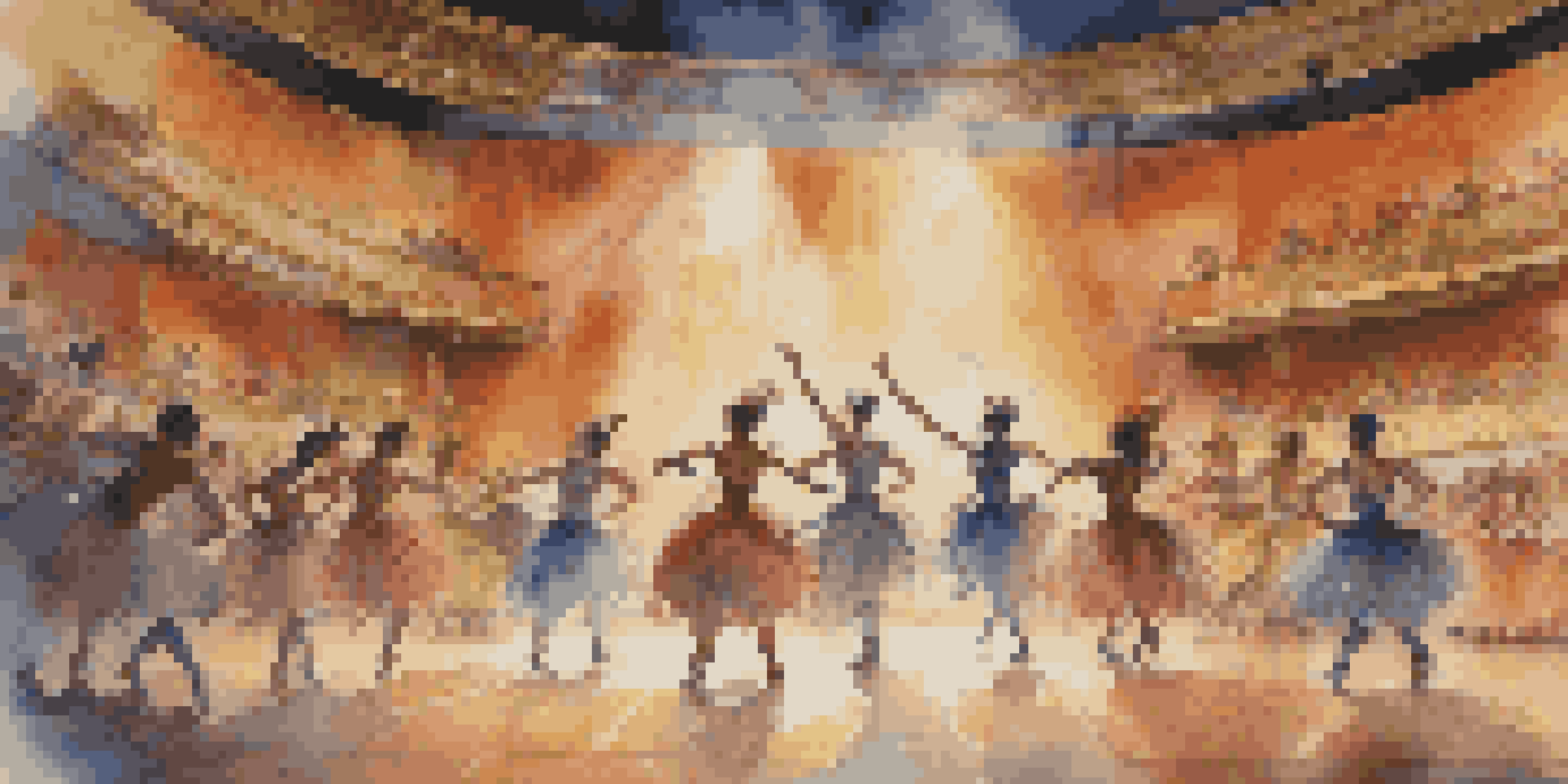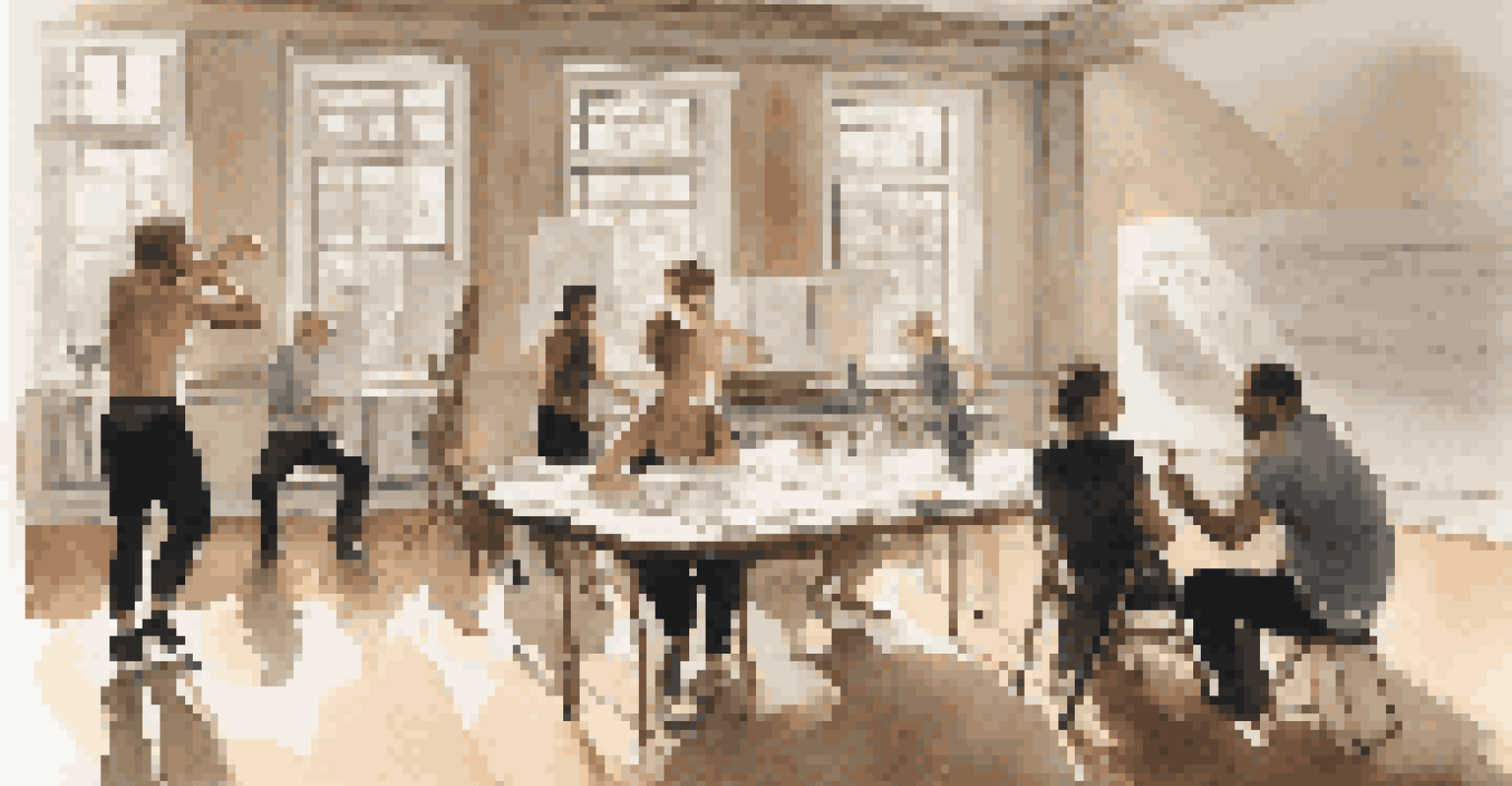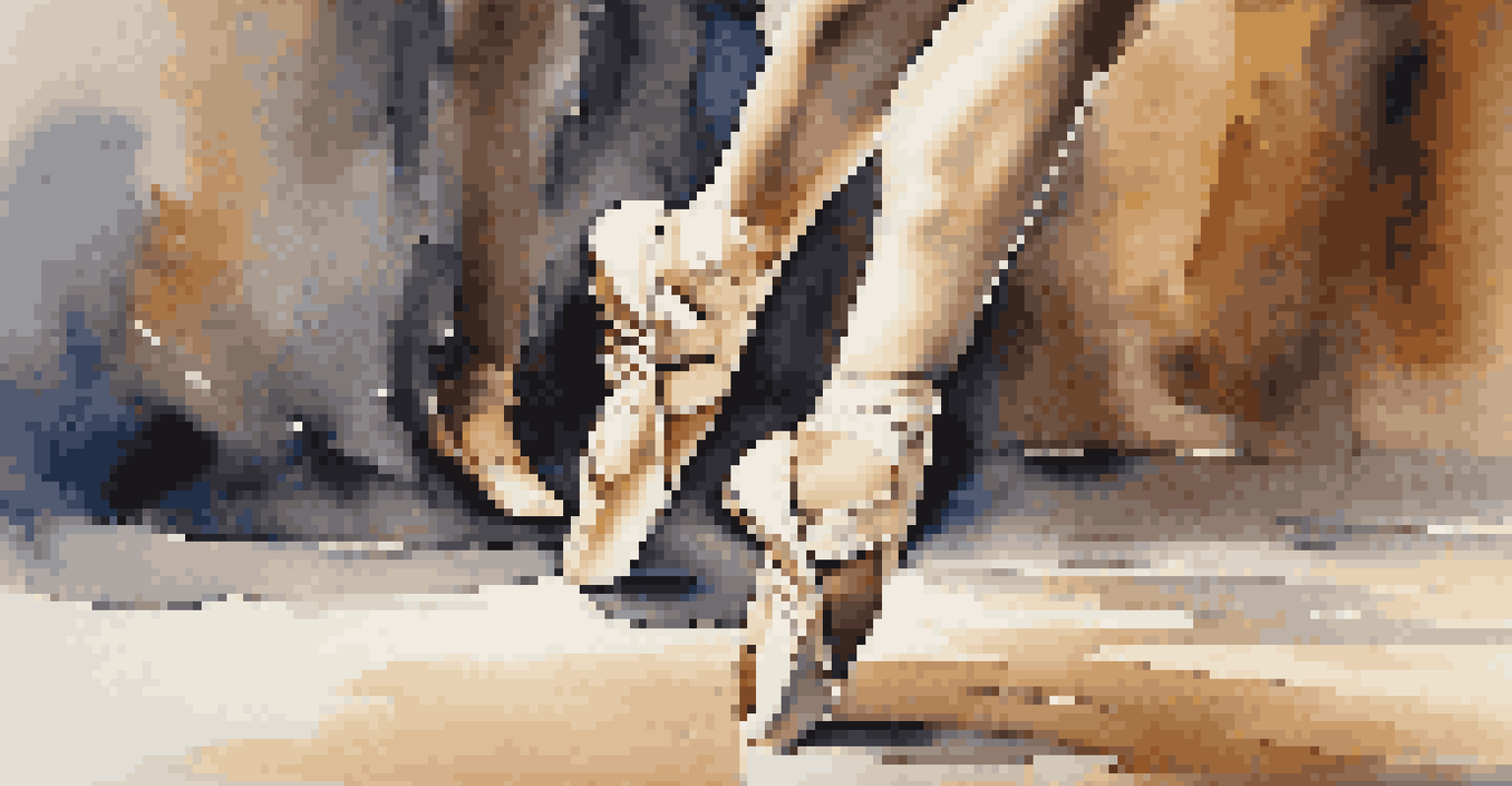Choreography and Stage Direction: A Collaborative Approach

Understanding Choreography and Stage Direction in Performance
Choreography and stage direction are the twin pillars of any compelling performance. Choreography focuses on the movement of dancers, while stage direction encompasses the overall staging of the production, including actors' movements and positioning. This collaboration is essential to create a cohesive narrative that captivates the audience.
Collaboration allows teachers to capture each other's fund of collective intelligence.
When these two elements work in harmony, they can elevate a performance from mundane to mesmerizing. For instance, a well-timed dance sequence can enhance an emotional scene, making it resonate more deeply with the audience. This synergy not only showcases the talent of the performers but also enriches the storytelling aspect.
Understanding the nuances of both choreography and stage direction allows for a richer artistic expression. As directors and choreographers collaborate, they can explore innovative ways to convey themes and emotions, ensuring that every movement serves a purpose in the overall narrative.
The Importance of Collaboration in the Creative Process
Collaboration between choreographers and directors is crucial for a successful production. Each brings a unique perspective and skill set that, when combined, can create a more dynamic and engaging performance. This partnership fosters an environment of creativity and experimentation, pushing the boundaries of traditional storytelling.

For example, a director might envision a scene in a specific way, but a choreographer's input could transform that vision into something even more impactful. This back-and-forth dialogue encourages a deeper exploration of the material, allowing both parties to discover new ideas and solutions. It's this collaborative spirit that often leads to innovative performance art.
Collaboration Enhances Performance
The partnership between choreographers and directors fosters creativity, leading to more dynamic and engaging productions.
Moreover, collaboration fosters a sense of unity among the cast and crew. When everyone is working toward a common goal, it creates a more supportive and cohesive working environment, which is essential in the often high-pressure world of performance arts.
Key Roles in Choreography and Stage Direction Collaboration
In any production, the roles of choreographers and stage directors are distinct yet interconnected. Choreographers are responsible for designing the movement sequences, ensuring they align with the music, mood, and character development. On the other hand, stage directors oversee the entire performance, guiding actors and integrating technical elements.
The whole is greater than the sum of its parts.
However, these roles are not isolated. A successful collaboration requires both parties to communicate openly about their visions and constraints. For instance, a choreographer might need to adjust a dance routine to fit within the stage director's overall concept, and vice versa, leading to a more refined and effective performance.
By understanding each other's roles, both choreographers and directors can support one another, ultimately enhancing the quality of the production. This mutual respect and shared responsibility pave the way for a seamless integration of movement and staging.
Techniques for Effective Collaboration Between Choreographers and Directors
To foster successful collaboration, choreographers and directors can adopt various techniques. Regular meetings and brainstorming sessions allow both parties to share ideas and develop a unified vision. These discussions can lead to exciting innovations, as they encourage creative thinking and problem-solving.
Additionally, incorporating workshops can be beneficial. These sessions can focus on specific scenes, allowing choreographers to present movement ideas while directors provide feedback. This interactive approach creates a safe space for experimentation and can lead to unexpected breakthroughs.
Communication is Key to Success
Open dialogue between choreographers and directors is essential for aligning their creative visions and overcoming challenges.
Lastly, utilizing technology can enhance collaboration as well. Video recordings of rehearsals enable both choreographers and directors to review performances together, identifying areas for improvement and celebrating successes in real-time.
Challenges Faced in Collaborative Choreography and Direction
Despite the benefits of collaboration, challenges can arise in the relationship between choreographers and directors. Differences in creative vision can lead to conflicts, making it essential to navigate these discussions with patience and understanding. It’s crucial for both parties to remember that they are ultimately working toward a shared goal.
Time constraints can also pose a challenge, especially in productions with tight schedules. Coordinating rehearsal times that accommodate both choreography and stage direction can be difficult, which may lead to rushed decisions. Open communication about timelines and priorities can help mitigate these issues.
Ultimately, the key to overcoming these challenges lies in mutual respect and flexibility. By being open to compromise and listening to each other's concerns, choreographers and directors can find solutions that honor both their artistic visions.
The Impact of Successful Collaboration on Audience Experience
When choreography and stage direction come together seamlessly, the audience experiences a richer performance. Viewers are drawn into the world of the story, captivated by the interplay between movement and action on stage. This synergy creates a more immersive experience, allowing the audience to connect emotionally with the characters.
For example, a well-executed dance number that aligns perfectly with the narrative can evoke powerful emotions, whether it’s joy, sadness, or tension. This heightened emotional engagement often leads to a more memorable experience for the audience, encouraging them to reflect on the performance long after it’s over.
Audience Impact from Synergy
When choreography and stage direction work seamlessly together, it creates a richer, more immersive experience for the audience.
Moreover, successful collaboration can set a production apart in a competitive landscape. Audiences are increasingly discerning, and a well-crafted performance that showcases the strengths of both choreography and stage direction is likely to receive positive reviews and word-of-mouth recommendations.
Conclusion: The Future of Collaborative Choreography and Direction
In conclusion, the collaboration between choreography and stage direction is vital for creating impactful performances. As the arts continue to evolve, embracing this partnership will lead to innovative storytelling and captivating visual experiences. The future of performance art lies in the ability of choreographers and directors to work together harmoniously.
As new technologies and methods emerge, there will be even more opportunities for creative collaboration. Virtual reality, interactive elements, and multimedia can all play a role in how choreography and direction are integrated, pushing the boundaries of traditional performance art.

Ultimately, it’s the shared passion and commitment to excellence that will drive this collaboration forward. By continuing to foster open communication, mutual respect, and a spirit of creativity, choreographers and directors can create performances that resonate deeply with audiences for years to come.